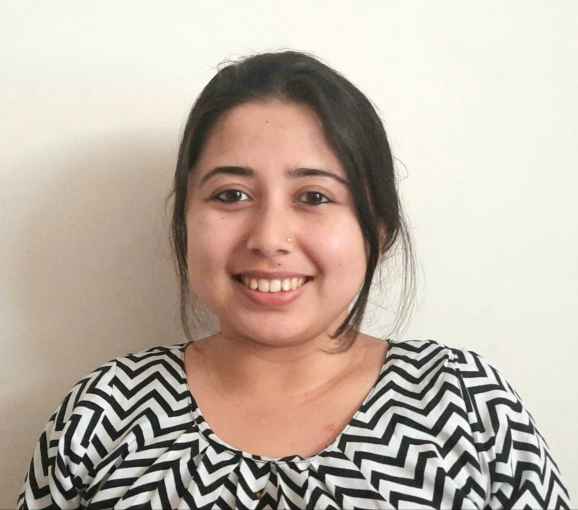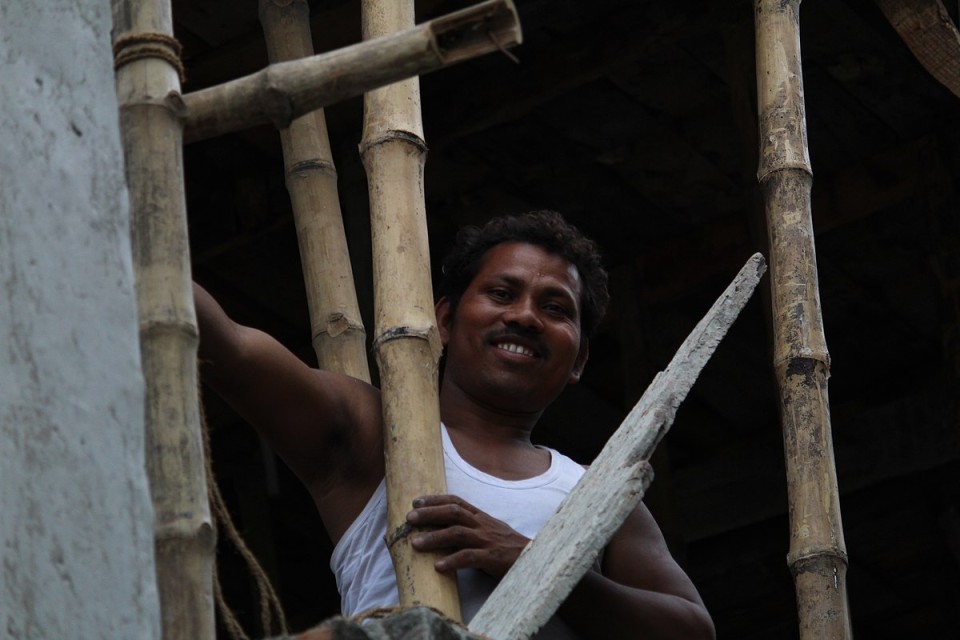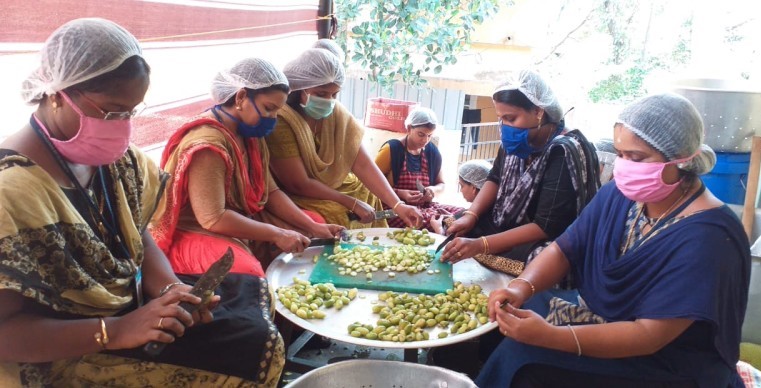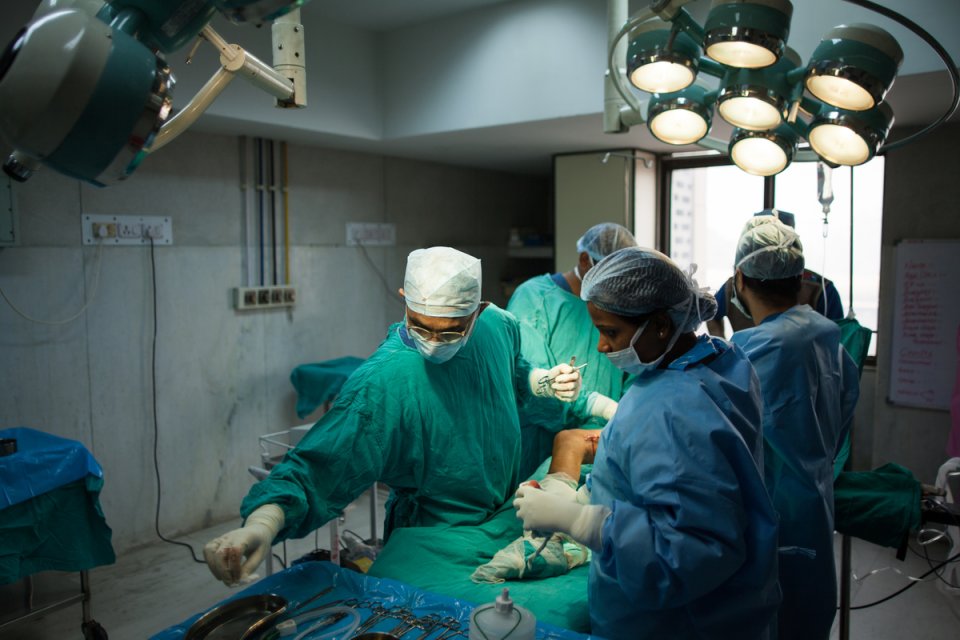As on April 23rd, 2020, more than 2.6 million cases of COVID-19 have been detected globally, including 21,393 in India. And the numbers are rising with each passing day.
Understandably, the major gap being discussed in the healthcare system is the shortage of ventilators and hospital beds, especially in intensive care units. There is however a parallel and equally urgent need to strengthen primary healthcare. There are several reasons for this.
Primary Health Centres (PHCs) are likely to be the first point of contact for most COVID-19 patients. Experience from China and Italy suggests that of all patients with the disease, 5-10 percent become severely ill and require admission to a health facility. About 70 percent of these patients can be managed with supportive care and oxygen, which PHCs can provide. Additionally, on account of their proximity to the communities that they serve, primary health facilities are best suited to educate and inform them about COVID-19. And finally, at a time when there is such restricted access to healthcare due to the lockdown, PHCs ensure access to healthcare for pregnant women and people with conditions such as tuberculosis and diabetes.
Related article: COVID-19: A unique opportunity to reform our health systems
In India, PHCs are riddled with several challenges and require strengthening on many fronts. Health workers are at the core of primary healthcare provision and the pandemic has necessitated rapid restructuring to ensure that they are better prepared to respond to the pandemic, while also ensuring their safety. This includes setting up a separate space to triage patients who may be infected by COVID-19, systematically ensuring physical distancing (among health teams and patients), using masks, and adopting other personal protection measures.
We propose six ways to support primary healthcare teams to deal with the COVID-19 pandemic. This draws on our experience of running AMRIT Clinics (primary healthcare clinics that provide preventive, promotive, and curative services) and a government PHC (in partnership with the state government) in rural, tribal communities in southern Rajasthan.
An effective response to the pandemic must start with building the capacity of healthcare teams. This involves providing information on multiple themes: the disease itself, personal protection, physical distancing, and awareness and health education. Primary health workers at the frontlines, especially in rural India, must be equipped to respond to the following questions: What is COVID-19? What is the disease’s course in a person who gets infected? How does handwashing help? How will the disease get better without any treatment? How severe is the disease? When will the disease go away?
What works well is a combination of different approaches—written protocols, web sessions, on-job training and support, and telephonic one-to-one conversations—to rapidly build up the knowledge and skills of doctors, nurses, and other health workers. This knowledge is critical to empower them and build their confidence as they deal with the situation.
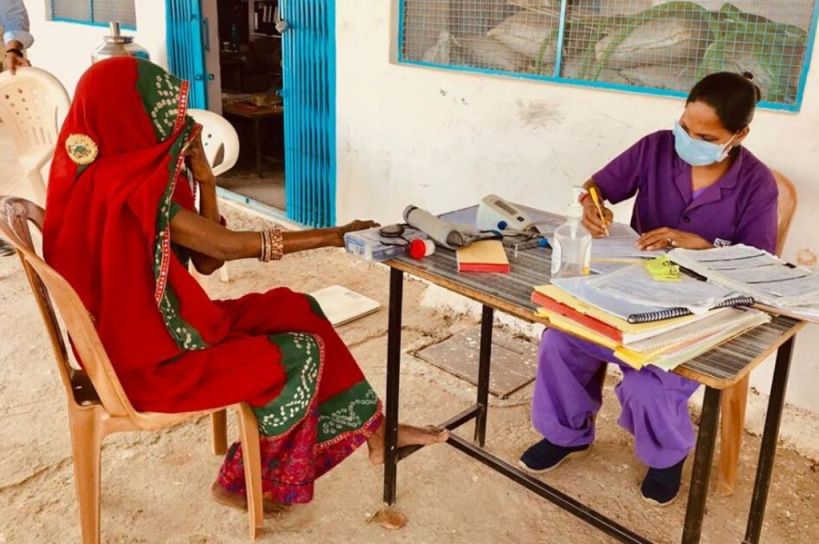
We need to reconsider the traditional approach of examining patients indoors, in a doctor’s chamber. | Picture courtesy: Basic Health Services
Healthcare teams face a high risk of infection due to the highly contagious nature of the novel coronavirus, it’s stability on different surfaces, and the fact that many infected people do not show any symptoms.
It’s also important that PHCs continue to run regular outpatient services, since they are usually the first point of care for those with chronic conditions.
Consequently, we need to reconsider the traditional approach of examining patients indoors, in a doctor’s chamber. Instead, open spaces can be used, and patients with a cough, cold, and fever can be asked to stay home and visit a PHC only if symptoms do not improve, or if they worsen. Health teams must use personal protection measures, practice frequent handwashing, and maintain a distance of at least one metre from all patients.
And while PHCs seek to serve COVID-19 patients on a priority basis, it’s also important that they continue to run regular outpatient services, since they are usually the first point of care for those with chronic conditions such as diabetes, hypertension, and tuberculosis. Treatment being disrupted for any of these will affect the control of the condition and may also be life-threatening. A staff member at the PHC in Nithauwa, Dungarpur district remarked, “We are now seeing many more people with hypertension and diabetes, as many other PHCs are no longer providing routine services,” underscoring the value of continuing to deliver regular health services.
As a result of the lockdown and the subsequent absence of public transport and restriction of movement, many people are unable to visit clinics for follow-ups. To ensure continuity of care, health teams may also consider identifying patients with chronic conditions and delivering medicines to their homes.
The pandemic has escalated the need for personal protective equipment (PPE) including masks, gloves, and caps, and for drugs and life-saving oxygen supplies. Simultaneously, there is an ongoing requirement for other drugs and supplies that are essential to delivering primary healthcare services. While sourcing these supplies has become difficult during the lockdown, maintaining a strong logistical supply chain is important not only to respond to COVID-19, but also to ensure delivery of other primary healthcare services. In order to ensure availability of these supplies, logistics teams will need to demonstrate persistence and creativity. This could involve contacting one distributor after another, until a required item is obtained or performing minor repairs of faulty medical equipment. These teams also need to ensure that all vehicles have the relevant permits that are needed to travel to the areas being served.
The fear that accompanies the pandemic is as real as the virus is. The experience from Wuhan has shown the high burden of anxiety, depression, and other mental health conditions among health providers, with nurses being more vulnerable than doctors, and women more than men. Now more than ever, we need to listen to our physicians, nurses, and health workers, understand their needs as well as their fears, and respond to them.
We need to listen to our physicians, nurses, and health workers, understand their needs as well as their fears, and respond to them.
In our case, our primary healthcare teams have shared many concerns with us: their families are worried about their safety and put pressure on them to stay home, they themselves are worried about spreading the infection to their families, especially to young children and the elderly, there are no transport services available to take them home, and there are difficulties in getting food and rations.
To respond to this, we have assigned senior colleagues to stay connected with the field team, support them, and listen to their needs. Based on their feedback, we are providing them with dry rations to meet their daily needs, and organising transport facilities to drop our nurses home.
Related article: The implications of COVID-19 for rural India
The pandemic is riding on a strong social media network that has reached even the most remote areas. The flood of information about COVID-19 that is generated and circulated through social media has reached these areas and is causing harm: inaccurate, fake, and sensationalised information is resulting in myths, fears, and stigma in many communities.
Empowering people and communities is a core component of primary healthcare. This is especially true in rural areas, where educating communities needs a strong connect on the ground. Health teams will benefit from drawing on the support of community members, such as ASHA workers and panchayat representatives, to orient the community about the disease and allay their fears.
In addition to their professional responsibilities, health teams are coping with self-isolation, colleagues falling sick, and other stressors. The situation is tiring, lonely, and stressful, and so maintaining morale is important to renew their energy.
The well-being of frontline teams who are out in the field every day is of utmost priority. Organisations will have to find different ways to motivate and energise their frontline teams. Our social media platforms are abuzz with team members sharing positive stories and experiences, and appreciating fellow team members’ efforts. In exploring more ways to connect with the team, and spur curiosity and friendly competition, we have started holding virtual quiz competitions, which have proved to be very popular.
The coming months will continue to be challenging and unpredictable. Supporting our frontline teams is a vital step to help them respond to this situation.
Dr Pavitra Mohan contributed to this article.
—
Know more
- Read about the mental health burden carried by medical workers in times of crisis and how it can be reduced.
- Learn about the economic benefits of primary healthcare.
- Explore the Government of India’s guidelines to enabling the delivery of essential health services during the COVID-19 pandemic.
- Go through this Ministry of Health and Family Welfare toolkit for ANMs, ASHA workers, and anganwadi workers on containing COVID-19, personal safety, managing stigma, and more.
Do more
- Use this COVID-19 preparedness checklist if you provide primary healthcare in rural and community settings.
- Connect with the authors at info@bhs.org.in if you’d like to volunteer for primary healthcare.



